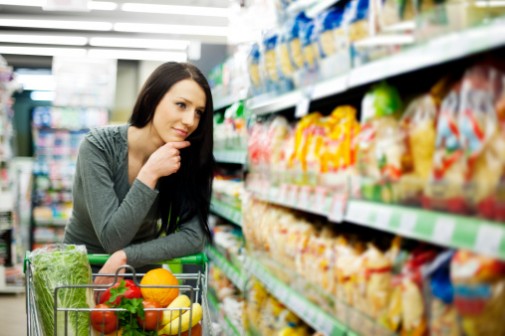9 food shockers

In recent years a growing number of Americans have been tipping the scale on getting the country back in shape.
It’s no secret that America has an issue with weight. The latest statistics show that nearly 70 percent of Americans age 20 years and older are considered overweight.
In response, farmers markets and specialty whole food shops are becoming increasingly popular. And many fast food giants and restaurant chains are now offering healthier options to meet the growing healthy demand.
Now a little more than half of U.S. residents say they put more thought into the foods and beverages they consume. But experts warn in some cases fancy language can actually steer even the sharpest foodies away from making healthy choices. This notion led to a food fact article recently published in Time magazine. Below are nine shockers the publication uncovered:
- A little fat in your salad can actually make it healthier. The truth is that consuming veggies and fat together helps the body better absorb nutrients. This means pouring on a little dressing that contains some fat may make a salad with carrots and tomatoes, which are high in fat-soluble carotenoids, more nutritious than using a fat-free dressing or skipping it altogether.
- “Multigrain” doesn’t necessarily mean whole grain. You may be surprised to know that just because an item says multigrain it may not be whole grain. In many cases, multigrain can appear as a synonym for whole grain or whole wheat — which is associated with a reduced risk of diabetes, heart disease and digestive problems. Multigrain means the food is made up of several grains that can be refined or whole. That’s why it’s important to check the label of ingredients. If the food is rich in whole grains, the first item listed should contain the word whole.
- Supermarket produce that’s imported can have higher nutrient levels than farmer’s market produce. There are actually several factors that determine the nutritional content of produce including light, temperature and soil. Even though transportation and storage can cause some types of produce to lose nutrients, studies show in some cases antioxidants may actually increase. This means those blueberries that are shipped long distances may be slightly more nutritious than those plucked right from the bush.
- Cooked veggies can be more nutritious than raw ones. Believe it or not this actually depends on the vegetable and your cooking method. For example, you can actually get more of the antioxidant lycopene from cooked tomatoes than raw ones. This is also true with carrots. Boiling them increases antioxidant levels known as carotenoids. But the magazine also points out that cooking carrots can lower the amounts of other compounds.
- Foods labeled “no trans fat” can legally contain it. The government actually allows manufacturers to round down anything less than 0.5 g of trans fat to zero. This means if you consume several servings of trans-fat-free foods, you could end up eating measurable amounts of trans fat. Here again is when checking the label is important. Try to steer clear of anything containing partially hydrogenated oils. (You may also recall that the Food and Drug Administration recently made a declaration about the safety of trans fats. If they are eventually banned from all foods, this will make your job a lot easier.)
- Just because it says decaffeinated doesn’t mean it’s caffeine-free. It may be tough to swallow, but most decaf coffee does indeed contain some caffeine. For example, a decaf espresso can have as much as 16 mg of caffeine. And a decaf latte, which contains a couple of shots of espresso, gives you about the same amount of caffeine found in a can of Coke.
- When it says fiber how much fiber is there really? Many manufacturers can boost the fiber content on packaged foods by adding in names such as inulin, maltodextrin and polydextrose. And while these do count toward a food’s fiber total, there is no actual proof that they offer the same health benefits as the naturally occurring fiber found vegetables, fruits and whole grains.
- There’s 3X’s more mercury in canned white tuna than chunk light. It turns out that the species used for white tuna, albacore accumulates more mercury than skipjack, which is used for chunk light. A healthier option? Canned salmon…It actually has less mercury than both types of tuna.
- In some cases fruit juice contains more sugar and calories than soda. Consuming too much sugar has been linked to many illnesses such as diabetes, and obesity. And most people might think fruit juice is a healthier alternative than soda. But here’s some interesting numbers to digest: A cup of grape juice contains 36 g of sugar — about 9 g more than a cup of Pepsi. Even though the sugar in juice is natural (and not high-fructose corn syrup), it’s still sugar. And even though all sugar calories give off the same amount of energy when burned, your body treats sugar calories differently, and it’s that difference that can be damaging to your health.
To learn more about making healthy food choices, watch our nutrition boost segment.
Related Posts
Comments
About the Author
health enews staff is a group of experienced writers from our Advocate Health Care and Aurora Health Care sites, which also includes freelance or intern writers.

















